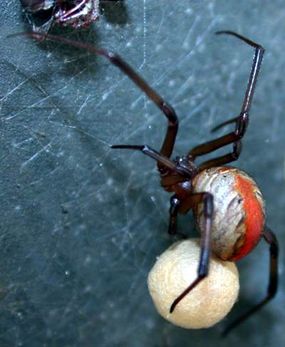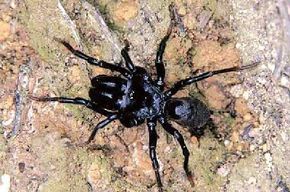How Spiders Use Silk
While all spider species spin silk, they do a number of different things with the fiber once they produce it. Not all species spin webs, and many don't use their silk in hunting at all. Just like human building materials, spider silk has a wide range of applications.
One of the most common silk uses is the dragline. As some spiders move from place to place, they lay out a thin, dry thread behind them. Just like a mountain climber, the spider uses the thread as a safety line. If it gets in trouble, it can quickly backtrack on the line to get to safety.
Advertisement
Another common silk use is nursery building. In most species, female spiders will spin a thick, protective cocoon for their developing eggs and sometimes the spiderlings once they've hatched. Some species will leave the cocoon unattended while the young spiders develop, and others, such as wolf spiders, will carry the cocoons around with them.

The most familiar use of silk, of course, is web building. Web structure varies a good deal from species to species. Some spiders build totally disorganized cobwebs, some form long funnels out of silk sheets and some work as a colony to form huge masses of silk sheets around plant life. Some spiders, such as the net-casting spider, will form a small web between their legs and quickly wrap up any insect that gets caught.
The best-known web is the orb web, the intricate design spun by most garden spiders. This web is one of the most remarkable structures in nature, and its construction is among the most incredible animal activities you'll ever see. We'll examine this process in the next section.
